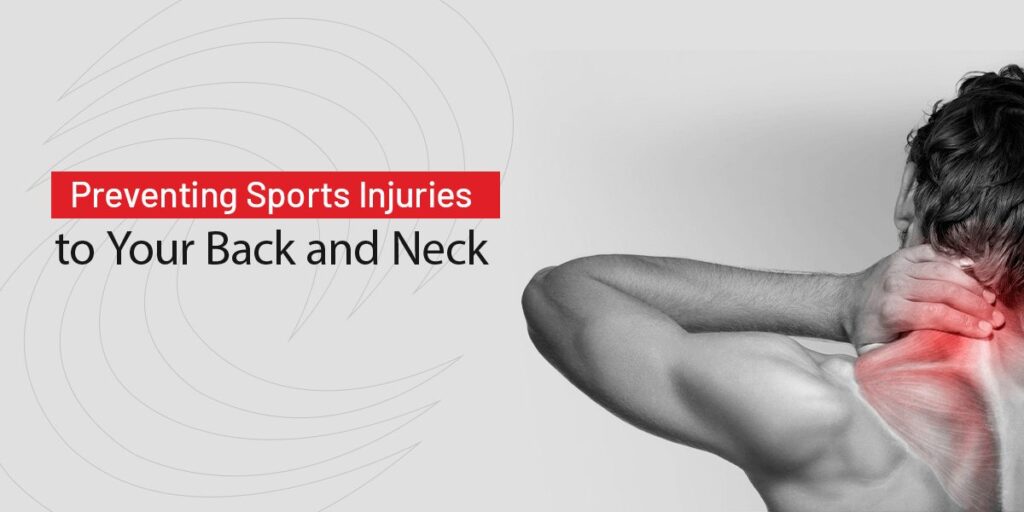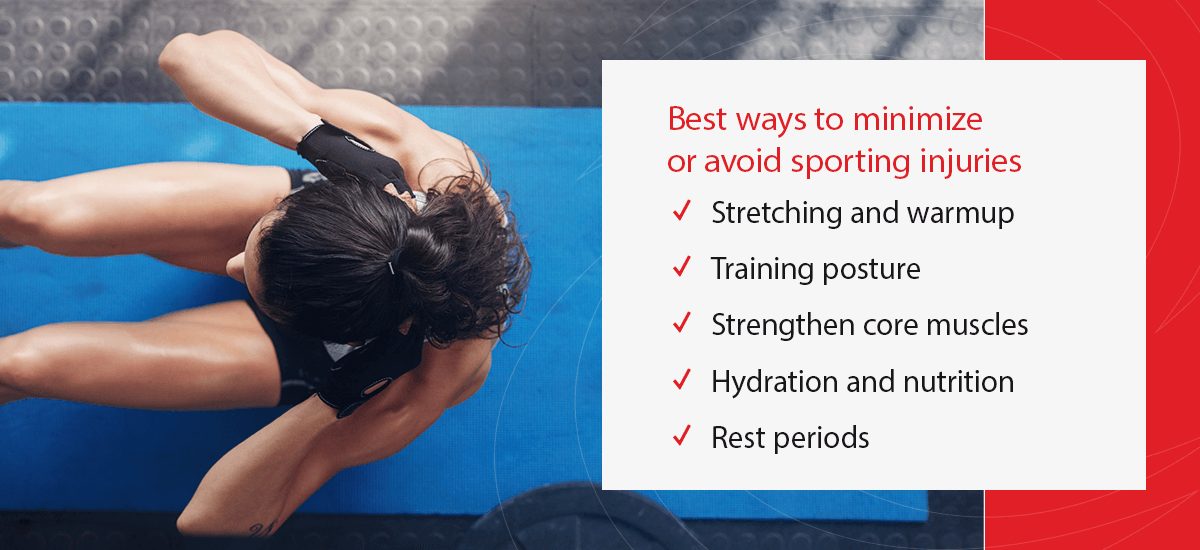
While sports provide an excellent way to stay active and exercise regularly, they can also pose the risk of injuries. Repetitive motions or recessive strain on the back and neck may increase a person’s risk of developing an injury. Read our guide on common sporting accidents and how to prevent sports injuries.
Visit Here to Schedule An Appointment
Herniated discs are a common sports back injury and a leading cause of back pain. Research has found 2% of people develop a herniated disc each year. Herniated discs occur when there is a complication with the rubbery disc between the vertebrae that causes the disc’s soft center to protrude through the exterior casing. While some herniated discs may not have noticeable symptoms, others can irritate the nearby nerves and cause pain.
Spinal fractures are fractures or dislocations of the vertebrae. Spinal fractures can occur anywhere along the spinal column. Most spinal fractures result from falls or sports-related accidents, such as direct impact collisions. Even a minor impact, fall or trauma can cause a spinal fracture. Fractures can cause long-term complications unless diagnosed and treated promptly.
Sprains and strains are another possible sports neck injury. A strain is damage or injury to a muscle or tendon, the tissue that connects muscle to bone. A sprain is a torn or stretched ligament, the band of tissue that connects one bone to another. Sprains and strains may happen when playing sports if a person pulls or twists a muscle, overextends the back or employs improper lifting or exercise techniques.
Back and neck spams are sudden tension and pain within the muscles. Awkwardly bending, lifting or twisting may lead to back and neck spasms. While many back spasms may improve with home remedies and rest, you may need to see a doctor if you have severe, ongoing spasms that negatively impact daily life.
An overextension or hyperextension injury occurs when a joint is forced beyond its normal or healthy range of motion. Overextension injuries can occur in many parts of your body, including the back, neck, shoulders, elbows and ankles. Fortunately, minor hyperextension injuries typically heal on their own with self-care.
Many overuse injuries can be attributed to using improper form. When an athlete uses poor technique while repeatedly performing the same movement, such as when a tennis player hits a tennis ball, they are more likely to injure themselves. Poor technique can place excess pressure on the muscles and joints, leading to a potential injury.
While many people understand the importance of helmets and padding for football players, they may forego appropriate gear in other situations. However, protective gear is an essential aspect of most sports. If a person partakes in a sport without the proper protective gear, they are much more likely to injure themselves.
Direct impact injuries are common sports-related injuries that occur when a large force collides with the body. In contact sports, a common direct impact injury is when two athletes collide. If one person’s elbow or head directly impacts your back or neck, you may develop an injury.
A lack of necessary or appropriate equipment for a sport can also pose an injury risk to athletes.

Tips to Prevent Athletic Injuries to the Back and Neck
Injury prevention in sports is essential for maintaining your health while enjoying the game. Fortunately, there are numerous tips and tricks to help prevent athletic injuries.
Some of the best ways to minimize or avoid sporting injuries include:
Learn More Everyday Home Remedies
One of the most important steps to minimizing your risk of sustaining a sports injury is to stretch and warm-up before exercising. A warmup can help improve ligament and muscle flexibility and increase blood flow. A warmup also helps your cardiovascular system work harder gradually by increasing the blood flow to the muscles and raising the body temperature.
Training is essential to every athlete, and learning proper form is crucial to your well-being. Improper form is a leading reason for back, neck and other sports injuries. Training to improve your posture and form can help minimize your risk for those injuries.
Strengthening and training your abdominal muscles can help prevent various sports injuries to both the upper and lower body. Weak or untrained core muscles can increase a person’s risk of head, neck, elbow and leg injuries.
Hydration and nutrition play an essential role in maintaining your health while exercising or playing sports by giving your body the material it needs to recover from exercise or injuries. Additionally, overheating is a common danger during intensive exercise in high temperatures. Properly hydrating before, during and after exercise can help prevent overheating and promote a safer and healthier workout.
Overuse injuries, also known as repetitive motion disorders, are common injuries you may experience if you perform a particular action or movement repeatedly, such as a swimmer practicing the breaststroke.
Pacing is an important aspect of minimizing injury during exercise or while playing sports. You should take frequent rest periods to allow your body to regain its strength. Be careful not to push your body beyond its limits, as doing so can result in numerous injuries.
If you are looking for a safe sport to play, you should try low-impact sports to improve your flexibility and promote smooth, gentle movements. Some of the best sports for low back pain include swimming, tai chi and yoga.
Avoiding contact sports will significantly lower your risk of injury. Low-impact sports can be a great way to stay active and exercise while minimizing the risk of aggravating a current injury. Those with low back pain should avoid gymnastics, football, soccer and other high-contact sports.
Many people with low back pain worry they may not be able to exercise or play sports without aggravating their back pain. Fortunately, many low-impact sports allow those with low back pain to exercise safely. While pain may cause someone to restrict movement, some exercises and motions can be beneficial to helping patients strengthen weakened muscles and manage pain. Training your back to improve flexibility and strength is a leading way to alleviate back pain and improve chronic discomfort and related symptoms.
Desert Institute for Spine Care (DISC) is a premier orthopedic spine center serving spinal patients throughout Arizona. Our surgeons are highly qualified to treat various spinal conditions, including degenerative disc disease, facet joint syndrome, pinched nerves, radiculitis and more. DISC surgeons are well-respected leaders in the field of endoscopic spinal surgery and spinal treatments.
Schedule an appointment online today to learn more about our spinal treatments and surgery.